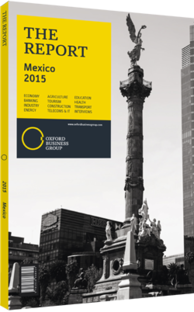Francisco N González Díaz, Director-General, ProMéxico: Interview

Interview: Francisco N González Díaz
What is the importance of the Pacific Alliance in terms of foreign direct investment (FDI) to the Latin American region?
FRANCISCO N GONZÁLEZ DIAZ: The four countries that belong to the Pacific Alliance together comprise the world’s ninth-largest economy and account for 47% of FDI flows into Latin America, receiving more investment than Mercosur member states. According to the World Economic Forum, the Pacific Alliance members have efficient mechanisms in place for protecting investors, with better ratings on this measure than BRIC countries.
How attractive is Mexico as a destination for FDI?
GONZÁLEZ: Mexico’s network of free trade agreements gives it preferential access to 45 countries and markets of more than 1.2bn people. It is the ideal export platform to reach almost two-thirds of world GDP, and the leading exporter in Latin America, accounting for 34% of the region’s trade. FDI is expected to have exceeded $22bn for 2014 and to reach nearly $30bn in 2016. According to the UN Conference on Trade and Development’s “World Investment Report 2014”, Mexico is among the 13 most attractive countries to invest in. The 2014-18 National Infrastructure Programme envisages federal investment of an estimated $100bn for communications and transport, of which 45% is earmarked for the modernisation and expansion of transport infrastructure and 55% for telecoms. In terms of workforce, by 2024 Mexico’s population will reach its lowest dependency ratio. Currently, 110,00 engineers graduate every year, turning Mexico into the most important technology pool in America.
In which areas must Mexico’s policies improve in order to continue attracting FDI?
GONZÁLEZ: Mexico’s position in terms of attracting FDI flows has improved notably in the last few years. In 2013 it broke its record of FDI inflows with over $42bn. Economic improvement requires long-term policies that foster a competitive business climate. The current government of Mexico has been conducting a series of structural reforms that have allowed foreign investment into certain aspects of the economy that had stagnated over the years. In 2015 we will start seeing the benefits of these reforms. Thus, expectations for FDI inflows into Mexico for 2015 are promising, led by investments in the energy sector.
What are the main benefits of the energy reform?
GONZÁLEZ:The comprehensive energy reform implemented in Mexico is the most impressive in eight decades. It modernises the country’s institutional framework and opens opportunities for private investment throughout the energy value chains.
It enables more companies to extract natural gas, which we will use to produce cheaper, cleaner energy. It will also help attract new capital and state-of-the-art technology – in electricity, for example, it allows for a new wholesale market and establishes equal conditions for public and private firms, which will result in more market participants, and thus, competitive prices.
The energy reform, alongside the rest of the structural reforms, opens up a new era of opportunity. Some of the expected benefits are: $10bn a year in FDI, lower prices for electricity and natural gas, and promotion of renewable sources of energy. There are four main sectors of opportunity in the Mexican energy value chain: exploration and production; refining and natural gas processing; transmission, storage, distribution, and commercialisation; and services.
ProMéxico recently signed two collaboration agreements, one with Shell and the other with BP. The main goal of these is to support the Mexican government in developing the national supply chain in order to obtain more competitive inputs that meet the national content requirements provided for in the energy reforms. According to independent analysts, the reforms will add one percentage point to the growth of the Mexican economy in 2018 and two percentage points more to GDP in 2025, compared with previous forecasts.
You have reached the limit of premium articles you can view for free.
Choose from the options below to purchase print or digital editions of our Reports. You can also purchase a website subscription giving you unlimited access to all of our Reports online for 12 months.
If you have already purchased this Report or have a website subscription, please login to continue.

